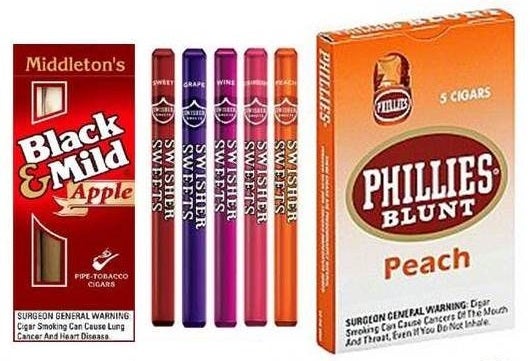
Even though cigarette use has dropped among youth and minority populations, the use of cigars is on the rise ― most notably for African American youth. Current research shows that 11 percent of African American high school students smoke cigars. Part of the problem is that when most African American youth think of cigars, they picture large stogies puffed by old men in smoky gentlemen’s clubs. They often do not consider the slim, grape flavored cigarillo they’ve been sharing between friends to be in the same category.
As is often the case, issues that are highly prevalent among minority youth remain a low priority until the consequences begin to bubble above the surface. As anti-tobacco groups hammer down on cigarettes to protect young people from adopting the addiction, tobacco companies have been happy to see cigars flying under the radar. Cigarettes are heavily taxed, flavor-restricted, and can no longer be sold in singles. Cigarillos, on the other hand, enjoy no such luxuries. Cigarillos are cheap, sweet, and easily accessible. In fact, anti-tobacco groups have given such little attention to cigarillos that many young people don’t consider cigarillos to be a cousin of cigarettes.
The misinformation surrounding cigars is astounding. Most young people don’t smoke traditional, full-size cigars, so they often don’t make the connection that cigarillos are, indeed, cigars containing the same harmful chemicals as all other combustible tobacco products. Young people often refer to cigarillos by their most popular brand names such as Black & Mild or Swisher Sweets. Not calling them cigars may lend to the perception that they are a separate, less threatening product. In fact, many young people believe that cigarillos are much healthier than both traditional cigars and cigarettes. Further, it is the custom of many young cigarillo smokers to remove the inner lining (often called “cancer paper”) of the cigarillo because it is thought to remove the harmful effects of smoking. This process is known as champing, freaking or hyping. While there is no research to substantiate the claim that “freaking or hyping” a cigarillo reduces cancer risk, the rumors persist. But an innocent naming issue and an overly-hyped cigarillo surgery can’t be entirely to blame. Anti-tobacco advocates should be held accountable for sustained misinformation inside urban and minority communities. The FDA may soon give greater priority to cigarillos, but we can’t wait for the feds to speak up before we start making some noise.
Anti-tobacco groups have to pay more attention to the beliefs and practices of our most vulnerable minority communities. We’ll only be able to cut tobacco rates when the issues related to minority and urban youth matter to everyone. Until then, don’t blame the kids for believing the hype.
